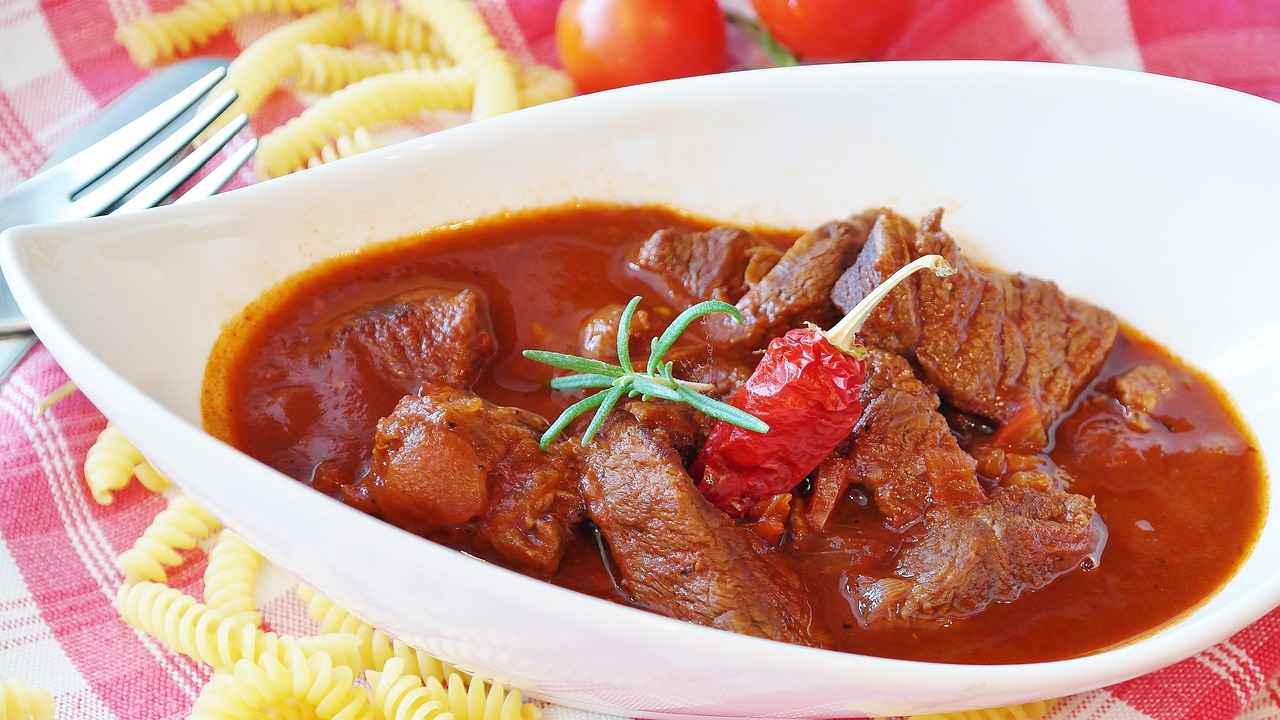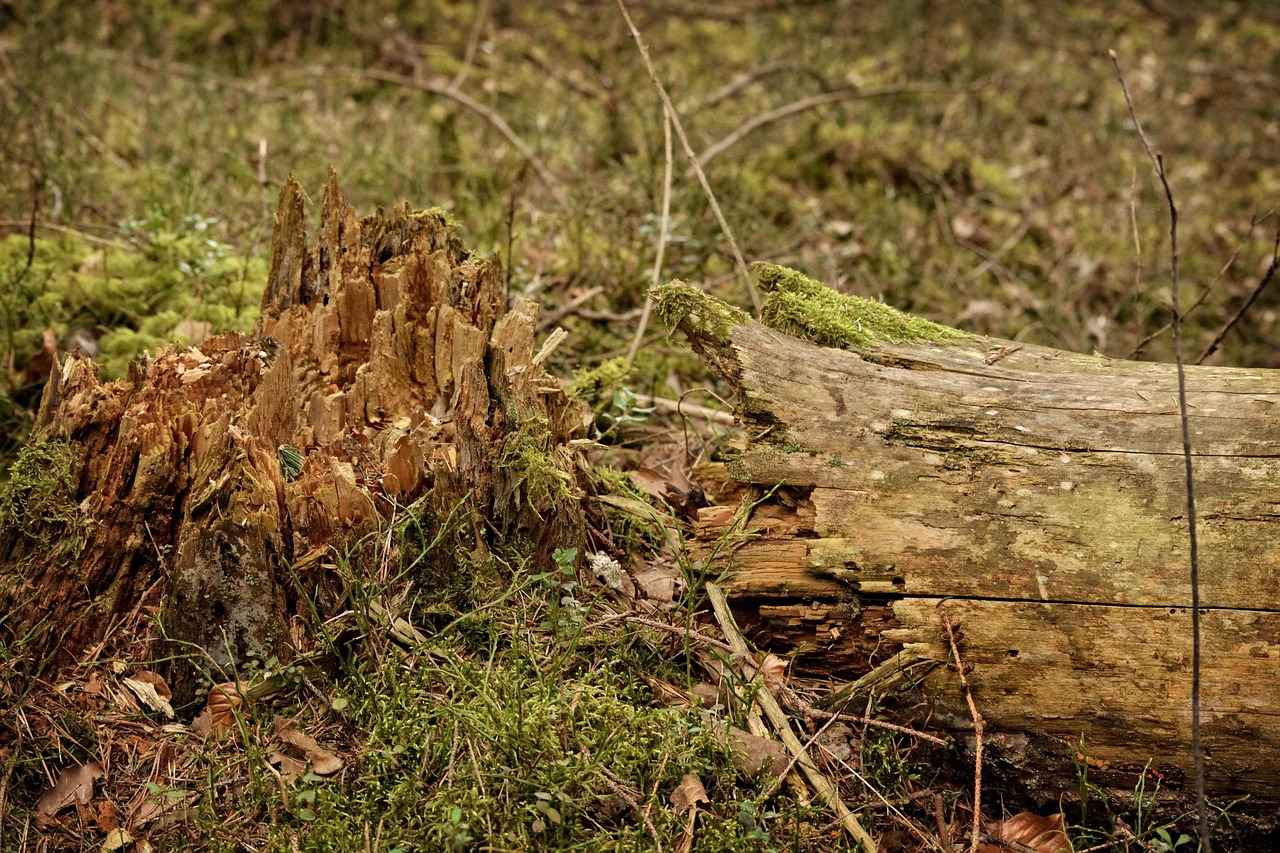Making your own beef jerky can be a rewarding endeavor, but knowing when it is perfectly dried is crucial for achieving the best flavor and texture. This article provides essential tips and methods to determine when beef jerky is perfectly dried, ensuring optimal flavor and texture for your homemade snacks.
Identifying the right signs of doneness is crucial for making great beef jerky. Here are the key indicators to look for:
- Color: Properly dried jerky should have a rich, dark color. The meat should appear uniform without any shiny or wet spots.
- Texture: The jerky should be firm yet slightly pliable. It should not crumble or break easily when bent.
- Moisture Levels: When you tear a piece, it should not feel overly moist or sticky. A slight amount of moisture is acceptable, but it should not be wet.
Using a food dehydrator can simplify the jerky-making process. Follow these tips to achieve consistent results:
- Settings: Familiarize yourself with your dehydrator’s settings, as different models may vary in temperature and time requirements.
- Timing: Monitor the drying process closely, as the time required can depend on the thickness of the meat and the model of your dehydrator.
The ideal temperature for dehydrating beef jerky typically ranges between 145°F to 160°F. This temperature range helps eliminate harmful bacteria while achieving the desired texture. It is essential to use a thermometer to ensure accuracy.
Preheating your dehydrator ensures that the meat reaches the necessary temperature quickly. This step enhances food safety and improves the drying process for better flavor retention.
The drying time can vary based on thickness and moisture content, but generally, it takes about 4 to 8 hours. Monitoring progress is key to achieving the perfect jerky. Check periodically for doneness using the methods outlined below.
Testing for doneness is essential to ensure your jerky is safe and enjoyable. Here are some effective methods:
The bend test is a simple method to check if your jerky is done. Properly dried jerky should bend without breaking, indicating the right moisture content. If it snaps, it may be over-dried.
Using a meat thermometer can provide precise readings of your jerky’s internal temperature, ensuring that it has reached the safe zone for consumption. Aim for an internal temperature of 160°F for beef.
Avoiding common pitfalls can significantly improve your jerky-making experience. Understanding these mistakes helps ensure you create delicious and safe jerky every time:
Overloading your dehydrator can lead to uneven drying. Proper spacing allows air to circulate, ensuring that each piece of meat dries consistently and thoroughly. Aim for a single layer of meat for optimal results.
Choosing the right cut of meat and slicing it properly can prevent toughness. Additionally, marinating the meat can enhance flavor and tenderness before drying. Consider using a marinade that includes acidic ingredients like vinegar or citrus juice to help tenderize the meat.
By following these tips, you can ensure that your homemade beef jerky is perfectly dried, flavorful, and safe to eat. Enjoy your jerky-making adventure!

What Are the Signs of Properly Dried Beef Jerky?
Understanding the signs of properly dried beef jerky is essential for anyone looking to make their own delicious snacks at home. Beef jerky is not only a tasty treat but also a great source of protein. However, to achieve the perfect jerky, one must pay attention to various indicators that signify doneness. Here are the key signs to look for:
- Color: The color of your jerky should be a rich, deep brown. It should not appear too dark or burnt, which can indicate over-drying, nor should it look too pale, as this may suggest that it is undercooked. A consistent color throughout the pieces is a good sign of even drying.
- Texture: Properly dried jerky should feel firm yet slightly pliable. When you touch it, it should not feel sticky or moist. The surface should be smooth, and when you bend a piece, it should flex without breaking. If it snaps cleanly, it may be overdone.
- Moisture Levels: One of the most critical aspects of jerky is the moisture content. The jerky should have a slight moisture level that allows it to bend without breaking. If you notice any moisture beads on the surface, it is a sign that your jerky is not fully dried.
To further ensure that your jerky is safe to eat, consider using a meat thermometer. The internal temperature of the jerky should reach at least 160°F to eliminate any harmful bacteria. This is especially important if you are using a method that does not involve a dehydrator.
Additionally, a bend test can be performed to check for doneness. Hold a piece of jerky in your hands and gently bend it. If it bends easily without breaking, it is likely ready. If it breaks, it may be too dry, and if it remains too flexible, it may need more time.
Another method to assess doneness is the tear test. Take a piece of jerky and try to tear it apart. It should be tough enough to require some effort but not so tough that it cannot be torn at all. This test helps gauge the texture and moisture balance of your jerky.
Lastly, always remember that practice makes perfect. Each batch may vary based on the cut of meat, thickness, and drying method. Keeping notes on your process will help you refine your technique over time, leading to consistently great jerky.
By paying attention to these signs of doneness, you can ensure that your homemade beef jerky is not only delicious but also safe to consume. Enjoy your jerky-making journey!
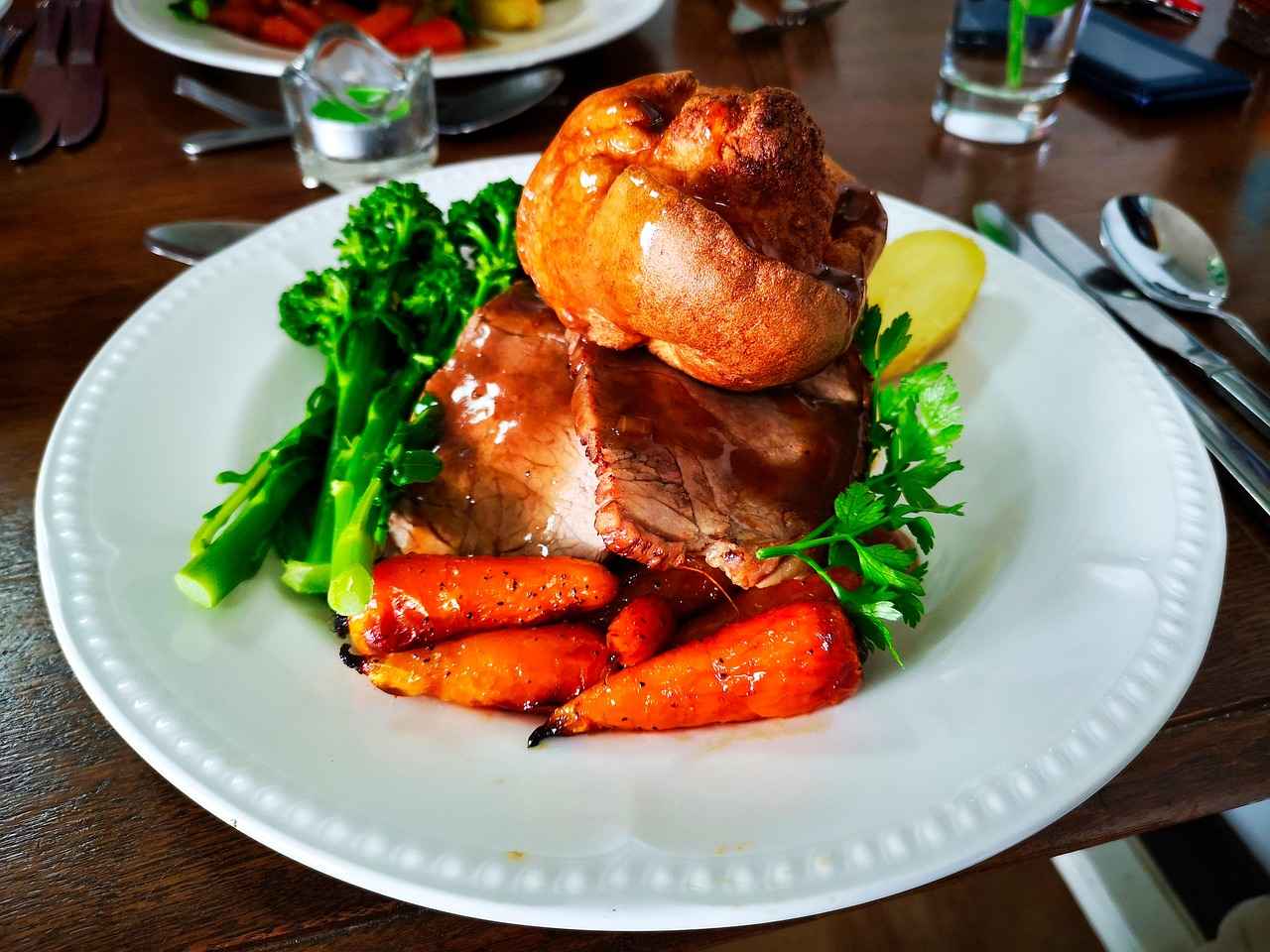
How to Use a Food Dehydrator for Jerky?
Using a food dehydrator for making jerky is an excellent way to simplify the process, ensuring that you achieve consistent results with perfectly dried meat every time. A dehydrator allows for controlled temperature settings and optimal air circulation, which are essential for creating delicious jerky.
The first step in using a food dehydrator effectively is to understand its settings. Most dehydrators come with adjustable temperature controls, which are crucial for drying meat safely. The ideal temperature for dehydrating beef jerky typically ranges between 145°F to 160°F. This range not only helps eliminate harmful bacteria but also allows the meat to dry evenly without cooking it.
Timing is another critical factor in the jerky-making process. Depending on the thickness of your meat slices and their moisture content, the drying time can vary significantly. Generally, you can expect to dehydrate your jerky for about 4 to 8 hours. It’s advisable to check the jerky periodically to ensure it doesn’t over-dry, which can lead to a tough texture.
Preparation is key to making great jerky. Start by selecting the right cut of meat—lean cuts such as top round, flank steak, or sirloin work best. Trim off any visible fat, as it can lead to spoilage. Slice the meat into uniform pieces, ideally about 1/4 inch thick, to ensure even drying.
Marinating your meat not only enhances flavor but also helps with tenderness. A simple marinade can include soy sauce, Worcestershire sauce, garlic powder, and black pepper. Allow the meat to marinate for at least 4 hours, or overnight for deeper flavor absorption, before placing it in the dehydrator.
Proper arrangement of meat in the dehydrator is essential for effective drying. Avoid overcrowding the trays; instead, place the meat slices in a single layer, allowing space between each piece. This spacing enables adequate air circulation, which is vital for consistent drying.
Once the drying time is complete, you’ll want to test your jerky for doneness. A reliable method is the bend test: properly dried jerky should bend without breaking. If it snaps, it may have dried too long. Additionally, using a meat thermometer can help ensure that the internal temperature has reached a safe level.
- Overloading the Dehydrator: This can lead to uneven drying and inconsistent results.
- Not Preheating: Failing to preheat your dehydrator can result in longer drying times and affect the meat’s texture.
- Ignoring Storage Conditions: Once dried, store your jerky in a cool, dark place in an airtight container to maintain freshness.
By following these tips and understanding how to use a food dehydrator effectively, you can create delicious, homemade beef jerky that will impress your friends and family. With practice, you’ll master the art of jerky-making, ensuring flavorful and perfectly dried meat every time.
What Temperature Should You Set for Dehydrating Beef?
When it comes to dehydrating beef jerky, one of the most critical factors to consider is the temperature setting. The ideal temperature for dehydrating beef jerky typically falls within the range of 145°F to 160°F. This specific temperature range is essential for ensuring that harmful bacteria are effectively eliminated while achieving the desired texture of the jerky.
At temperatures below 145°F, there is a risk that the meat may not dry adequately, allowing bacteria such as Salmonella and E. coli to survive. Conversely, exceeding 160°F can lead to a jerky that is overly dry and tough, losing the tender chew that makes jerky enjoyable. Therefore, maintaining the right balance is crucial.
Temperature control is vital not only for food safety but also for the quality of the final product. When dehydrating beef, the goal is to remove moisture without cooking the meat. This is where the dehydrator’s temperature settings come into play. A consistent temperature within the recommended range helps in:
- Eliminating Pathogens: A steady heat ensures that any harmful bacteria present in the meat are destroyed.
- Achieving Optimal Texture: The right temperature allows the meat to dry evenly, resulting in a pleasant chewiness.
- Enhancing Flavor: Proper drying helps to concentrate the flavors of the marinade or seasoning used.
Preheating your dehydrator is an essential step that should not be overlooked. By preheating, you ensure that the meat reaches the necessary temperature quickly, which is especially important for food safety. Here are some tips for effective preheating:
- Set your dehydrator to the desired temperature and allow it to run for about 15-30 minutes before adding the meat.
- Use a thermometer to check that the dehydrator is maintaining the correct temperature.
The drying time for beef jerky can vary significantly based on factors such as the thickness of the meat slices and the moisture content. On average, the dehydration process can take anywhere from 4 to 8 hours. It is advisable to check the jerky periodically to monitor its progress. A good rule of thumb is to start checking for doneness around the 4-hour mark.
Using a food dehydrator offers several advantages over traditional drying methods, such as using an oven. A dehydrator provides:
- Consistent Temperature Control: Most dehydrators come with adjustable temperature settings, ensuring even drying.
- Energy Efficiency: Dehydrators use less energy compared to running an oven for several hours.
- Convenience: Many dehydrators have timers and automatic shut-off features, allowing for hands-free operation.
In conclusion, understanding the ideal temperature for dehydrating beef jerky and adhering to proper techniques can significantly enhance your jerky-making experience. By maintaining the right temperature, preheating your dehydrator, and monitoring drying times, you can create delicious, safe, and perfectly textured beef jerky at home.
Why Is Preheating Important?
When it comes to making the perfect beef jerky, preheating your dehydrator is a crucial step that should not be overlooked. This simple yet effective process significantly influences the quality of your jerky, ensuring that it meets both food safety standards and flavor expectations.
Preheating your dehydrator serves multiple purposes. First and foremost, it ensures that the meat reaches the necessary temperature quickly. This rapid temperature increase is essential for killing harmful bacteria that may be present, making your jerky safer to consume. By eliminating these pathogens, you not only enhance food safety but also improve the overall drying process.
Another vital aspect of preheating is its impact on flavor retention. When meat is subjected to a gradual increase in temperature, it may lose moisture unevenly, leading to a less flavorful product. Preheating helps to seal in the juices, allowing the meat to maintain its natural flavors and spices used during marination. This results in a more satisfying jerky that is bursting with taste.
Generally, it is recommended to preheat your dehydrator to around 160°F (71°C). This temperature is effective in ensuring that the meat is exposed to sufficient heat to eliminate any potential bacteria quickly. Once preheated, you can then adjust the temperature to the desired setting for dehydrating your jerky.
Typically, preheating should take about 10 to 15 minutes. This duration allows the dehydrator to reach the optimal temperature, ensuring that your meat is dried effectively. Remember to check the manufacturer’s instructions for specific preheating recommendations, as different models may have varying requirements.
While it may be tempting to skip the preheating step to save time, doing so can lead to uneven drying and potentially unsafe jerky. Skipping this essential step can compromise both the safety and quality of your final product. Therefore, it is advisable to make preheating a non-negotiable part of your jerky-making process.
- Meat Selection: Choosing the right cut of meat, such as flank steak or top round, can make a significant difference in the texture and flavor of your jerky.
- Marination: A well-balanced marinade not only enhances flavor but also contributes to the tenderness of the meat.
- Proper Slicing: Slicing the meat against the grain ensures that the jerky is easier to chew and has a better texture.
In conclusion, preheating your dehydrator is a vital step in the jerky-making process that enhances food safety and flavor retention. By following the recommended practices for preheating, you set the stage for producing perfectly dried, delicious beef jerky that you and your family can enjoy.
How Long Should You Dehydrate the Meat?
When it comes to making beef jerky, one of the most critical aspects is determining the right drying time. The answer isn’t straightforward, as it can vary significantly based on several factors, including the thickness of the meat slices and the moisture content. However, on average, you can expect the drying process to take anywhere from 4 to 8 hours.
To achieve the perfect jerky, it’s essential to monitor the progress throughout the drying process. Factors such as the type of dehydrator used, the environmental conditions, and the specific cut of meat can all influence the drying time. For instance, thicker cuts of meat will naturally take longer to dry compared to thinner slices. Additionally, if your meat is particularly moist, it may require extra time to reach the desired texture.
Here are some practical tips to help you determine when your jerky is done:
- Visual Inspection: Look for a consistent color throughout the meat. Properly dried jerky should have a deep, rich color without any visible moisture.
- Texture Check: The jerky should be firm and slightly pliable. If it feels too soft or has any moisture, it needs more time.
- Smell Test: A strong, savory aroma is a good indicator that your jerky is nearing completion. If it smells overly gamey or off, it may not be ready.
Using a food dehydrator can simplify the drying process, as many models come with preset temperature and time settings tailored for jerky. The ideal temperature for dehydrating beef jerky typically ranges from 145°F to 160°F. This range is crucial for eliminating harmful bacteria while ensuring that the meat retains its flavor and texture.
Preheating your dehydrator is also an important step. By doing so, you ensure that the meat reaches the necessary temperature quickly, which not only enhances food safety but also improves the drying process. This can lead to better flavor retention and a more enjoyable final product.
To check for doneness, consider performing the bend test. This simple method involves bending a piece of jerky; it should bend without breaking. If it snaps, it’s likely too dry, while if it bends easily, it may need more time to dry out.
In summary, while the general guideline for drying beef jerky is between 4 to 8 hours, the exact time can vary based on several factors. Regularly monitoring the jerky, using a thermometer for accurate temperature readings, and employing sensory checks can help ensure that your jerky is perfectly dried and ready to enjoy. With practice and attention to detail, you can master the art of making delicious homemade beef jerky that satisfies your cravings.
What Are Alternative Drying Methods for Jerky?
Making beef jerky at home can be a rewarding experience, especially when you know the right techniques to achieve the perfect texture and flavor. While a food dehydrator is often the go-to appliance for this task, you can still create delicious jerky using an oven or air fryer. Each method has its own benefits and requires specific techniques for optimal results.
Using an oven is a straightforward alternative for making jerky. Here are some essential steps:
- Preparation: Preheat your oven to a low temperature, ideally between 160°F to 175°F. This temperature range helps to dry the meat without cooking it.
- Arrange the Meat: Place the marinated meat strips on a wire rack set over a baking sheet. This allows proper airflow around the meat, promoting even drying.
- Drying Time: Depending on the thickness of the meat, the drying process can take anywhere from 4 to 6 hours. Check periodically to ensure even drying.
Using an oven is a great option for those who may not have a dehydrator, but it requires attention to ensure the meat dries properly without cooking.
An air fryer can also be an excellent tool for making jerky. Its rapid air circulation technology mimics the dehydrating process. Here’s how to do it:
- Temperature Settings: Set your air fryer to a temperature between 160°F and 180°F. Some models have a dehydrator function that can be particularly useful.
- Loading the Basket: Arrange the meat strips in a single layer in the air fryer basket. Avoid overcrowding to ensure adequate airflow.
- Timing: The jerky may take 2 to 4 hours to dry, depending on the thickness of the meat and the specific air fryer model.
This method is efficient and can yield jerky with a great texture, while also being quicker than traditional oven drying.
Both the oven and air fryer methods come with distinct advantages:
- Accessibility: Most kitchens are equipped with either an oven or an air fryer, making these methods widely accessible.
- Control Over Temperature: Both methods allow for precise temperature control, which is crucial for safe drying.
- Versatility: An air fryer can be used for a variety of cooking tasks beyond jerky, while an oven can accommodate larger batches.
Regardless of the method you choose, there are some key considerations to ensure your jerky turns out perfectly:
- Meat Selection: Choose lean cuts of meat, as fat can spoil and affect the shelf life of your jerky.
- Marination: Marinating the meat not only enhances flavor but also aids in the preservation process.
- Monitoring Progress: Keep an eye on the jerky as it dries. Checking for the right texture and moisture content is essential for the best results.
In conclusion, whether you opt for the oven or air fryer, both methods can yield delicious homemade jerky. With the right techniques and attention to detail, you can create a snack that is not only tasty but also tailored to your personal preferences.
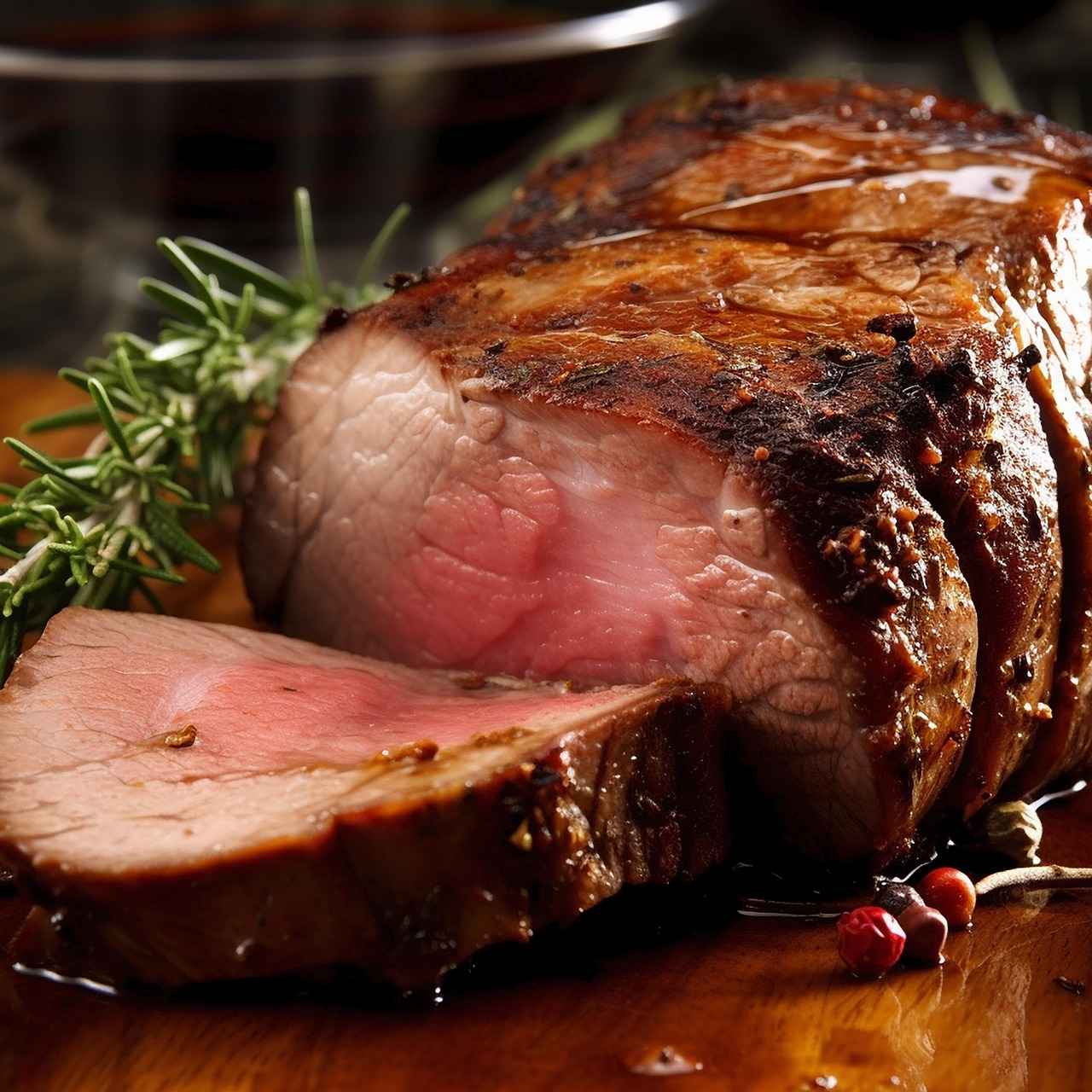
How to Check Jerky for Doneness?
When it comes to making beef jerky, knowing how to check for doneness is crucial. Properly dried jerky not only ensures safety but also enhances the overall flavor and texture of your homemade snack. In this guide, we will explore various methods for determining when your jerky is ready, so you can enjoy a delicious and safe treat.
To determine if your jerky is done, pay attention to several key indicators:
- Color: The jerky should have a deep, rich color. It should not appear overly shiny or greasy.
- Texture: Properly dried jerky should feel firm but not brittle. It should be slightly pliable.
- Moisture Levels: Inspect the surface; it should not be sticky or wet. A slight moisture is acceptable but excessive moisture indicates it needs more drying time.
The bend test is a simple yet effective method to check if your jerky is done. To perform this test:
1. Take a piece of jerky from the dehydrator.2. Hold it at both ends and gently bend it.3. If it bends without breaking and shows slight cracks, it is ready. If it snaps, it has been over-dried.
Using a meat thermometer can provide accurate readings of your jerky’s internal temperature. This is essential for ensuring safety:
- Insert the thermometer into the thickest part of the jerky.
- The internal temperature should reach at least 160°F to eliminate harmful bacteria.
In addition to the bend test and thermometer, a visual inspection can reveal a lot about your jerky’s doneness:
- Look for a consistent color throughout the pieces.
- Check that there are no visible signs of fat or moisture.
- Ensure the jerky has shrunk to about half its original size.
Dehydration time can vary based on the thickness of the meat and the method used. Typically, jerky should dry for 4 to 8 hours. Regularly checking for doneness during the last hour of drying is advisable to avoid over-drying.
Once you believe your jerky is ready, consider doing a taste test. A small bite can help you assess the flavor and texture. If it’s not quite right, simply return it to the dehydrator for additional time.
- Rushing the Process: Don’t be tempted to take jerky out too early. Patience is key for achieving the perfect texture.
- Ignoring the Guidelines: Always follow recommended temperatures and times specific to your drying method.
- Overlooking Storage Conditions: Properly dried jerky can spoil if not stored correctly. Ensure it’s kept in an airtight container in a cool, dry place.
By following these guidelines, you can confidently check your jerky for doneness, ensuring it is both safe and enjoyable. Remember, the right balance of moisture, flavor, and texture is what makes homemade jerky a delightful snack!
What Is the Bend Test for Jerky?
The bend test is a crucial method for determining the doneness of your beef jerky. This simple yet effective technique allows you to assess whether your jerky has been dried to perfection, ensuring that it is both safe to eat and delicious. When it comes to jerky, achieving the right moisture content is essential, and the bend test provides a straightforward way to evaluate this.
To perform the bend test, take a piece of your dried jerky and gently bend it. Properly dried jerky should bend easily without breaking. If the jerky snaps or breaks, it indicates that it has been over-dried, which can lead to a tough and chewy texture. On the other hand, if the jerky is too flexible and feels moist, it may not be dried enough, posing a risk for spoilage.
The importance of the bend test lies in its ability to ensure food safety and enhance the overall eating experience. Jerky that is too moist can harbor bacteria, while jerky that is overly dry can be unpleasant to chew. By using this simple method, you can achieve the ideal balance of moisture and texture.
- Step 1: Select a piece of jerky from your batch.
- Step 2: Hold the jerky at both ends.
- Step 3: Gently bend the jerky in the middle.
- Step 4: Observe the jerky’s response: it should bend and curve without breaking.
When performing the bend test, keep an eye out for the following characteristics:
- Flexibility: A good piece of jerky should bend easily.
- Surface Appearance: The surface should not be shiny or sticky, indicating excess moisture.
- Color: The color should be consistent, reflecting even drying.
While the bend test is effective, it’s beneficial to combine it with other methods for a more comprehensive assessment. Using a meat thermometer can help ensure your jerky has reached the safe internal temperature of at least 160°F, which is essential for killing harmful bacteria. Additionally, checking the jerky for any signs of spoilage, such as off odors or discoloration, can further ensure its safety.
When using the bend test, be aware of common mistakes that can lead to inaccurate results:
- Testing Too Early: Ensure that the jerky has been dehydrated for the recommended time before testing.
- Using Inconsistent Pieces: Test pieces of similar size and thickness for reliable results.
In conclusion, the bend test is an essential tool for anyone looking to make perfect beef jerky. By understanding how to conduct this test and what to look for, you can ensure that your jerky is not only safe to eat but also enjoyable to chew. Remember to combine the bend test with other methods for the best results, and avoid common pitfalls to achieve that perfect batch of jerky every time.
How to Use a Thermometer for Accurate Results?
When it comes to making beef jerky, ensuring that it is safe for consumption is paramount. One of the most effective ways to achieve this is by using a meat thermometer. This handy tool not only provides precise readings of your jerky’s internal temperature but also helps guarantee that it has reached the safe zone for eating.
Using a meat thermometer is essential for several reasons:
- Food Safety: The primary concern when making jerky is ensuring that harmful bacteria are eliminated. The USDA recommends that beef jerky be cooked to an internal temperature of at least 160°F to ensure safety.
- Consistency: A thermometer allows you to achieve consistent results every time. It helps you avoid undercooking or overcooking your jerky.
- Quality Control: By monitoring the internal temperature, you can ensure that your jerky maintains its desired texture and flavor.
To use a meat thermometer effectively, follow these steps:
- Choose the Right Thermometer: There are various types of meat thermometers available, including instant-read and digital models. Choose one that suits your needs.
- Insert the Thermometer Correctly: For accurate readings, insert the thermometer into the thickest part of the meat, avoiding any fat or bone, as these can give false readings.
- Monitor Frequently: Start checking the temperature about halfway through the drying process. This will give you a good idea of how close your jerky is to being done.
The ideal internal temperature for beef jerky is between 160°F and 165°F. At this temperature, any potential pathogens are destroyed, making your jerky safe to eat. Keep in mind that the drying process can continue even after you remove the jerky from the heat, so it’s wise to check the temperature periodically.
To ensure even cooking and drying of your jerky, consider the following tips:
- Cut Uniformly: Slice your meat into uniform pieces. This helps ensure that all pieces dry at the same rate.
- Avoid Overcrowding: When using a dehydrator or oven, do not overcrowd the trays. Allow space for air circulation, which promotes even drying.
- Rotate Trays: If using a dehydrator, rotate the trays halfway through the drying process to promote even heat distribution.
While using a meat thermometer is straightforward, some common mistakes can lead to inaccurate readings:
- Not Calibrating: Ensure your thermometer is calibrated correctly. Check the manufacturer’s instructions for calibration methods.
- Taking Temperature Too Early: Avoid checking the temperature too soon. Give your jerky enough time to reach the desired internal temperature.
- Neglecting to Clean: Always clean your thermometer after each use to prevent cross-contamination.
In conclusion, using a meat thermometer is an essential step in the jerky-making process. It not only ensures that your jerky is safe to eat but also enhances the overall quality of your homemade snacks. By following the tips outlined above, you can master the art of jerky-making and enjoy delicious, safe, and perfectly dried meat every time.
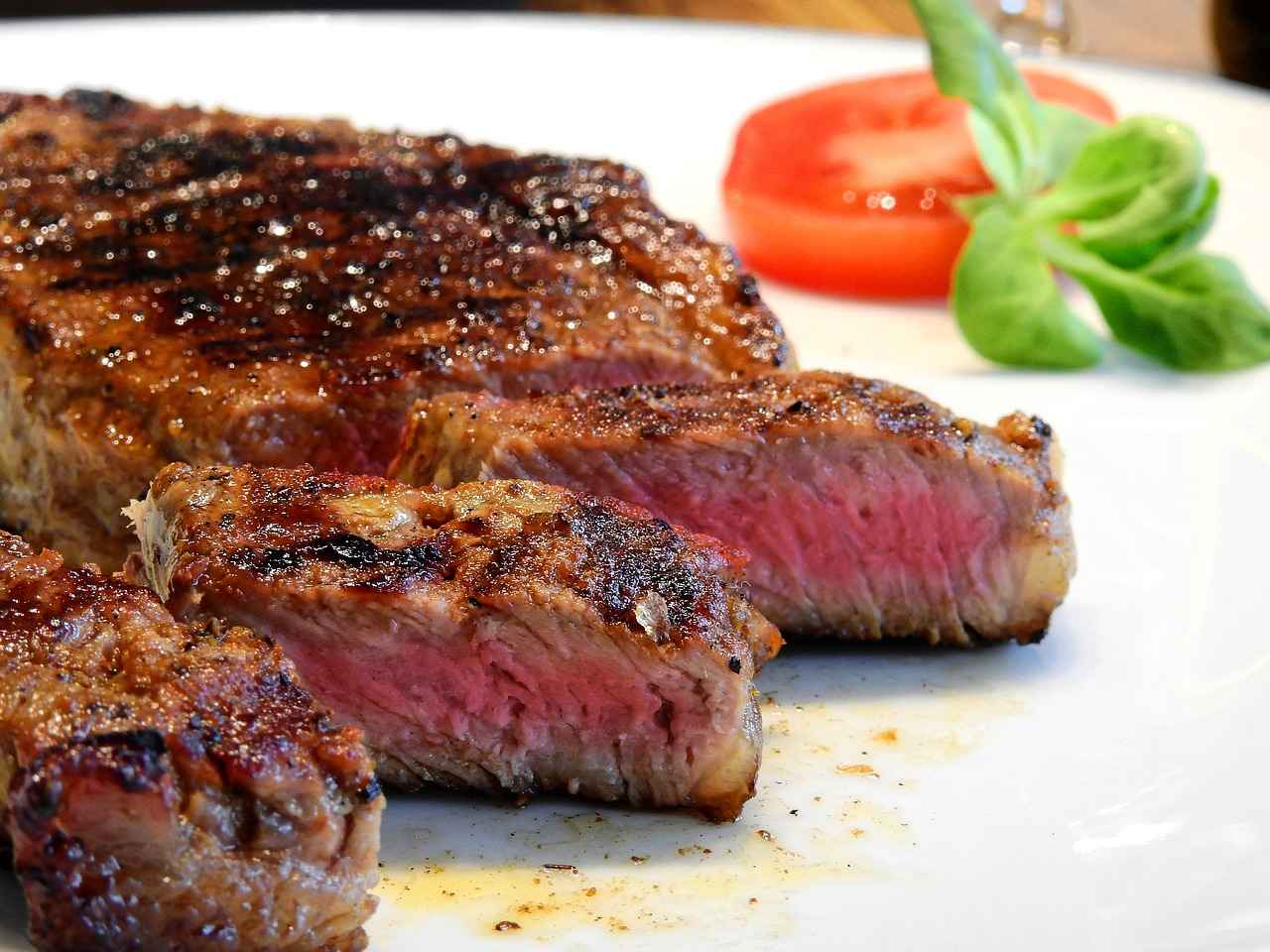
What Are Common Mistakes to Avoid When Making Jerky?
When it comes to making delicious beef jerky, avoiding common pitfalls can significantly enhance your experience and the quality of your final product. Many home jerky makers encounter issues that can compromise both flavor and safety. By understanding these mistakes, you can ensure that you create tasty and safe jerky every time.
- Not Choosing the Right Cut of Meat: The type of meat you select is crucial. Cuts like flank steak, sirloin, or brisket are ideal due to their low-fat content. Fat can lead to spoilage, so aim for lean cuts to ensure longevity.
- Incorrectly Slicing the Meat: Slicing against the grain helps to create a tender jerky. If you slice with the grain, you may end up with tough strips that are difficult to chew. Aim for uniform thickness, about 1/4 inch, for even drying.
- Overloading the Dehydrator: It’s tempting to pack as much meat as possible into the dehydrator, but this can lead to uneven drying. Proper spacing allows air to circulate freely, ensuring every piece dries thoroughly.
- Skipping the Marinade: Marinating not only adds flavor but also helps to tenderize the meat. A good marinade typically includes acidic components like vinegar or citrus juice, which can enhance both taste and texture.
- Ignoring Temperature Guidelines: The ideal temperature for dehydrating beef jerky is between 145°F to 160°F. This temperature range is essential for eliminating harmful bacteria. Always use a reliable thermometer to monitor the internal temperature.
- Not Preheating the Dehydrator: Preheating your dehydrator is a crucial step that many overlook. It ensures that the meat reaches the necessary temperature quickly, enhancing food safety and improving the drying process.
- Failing to Check for Doneness: Relying solely on time can lead to under-dried or over-dried jerky. Implement methods like the bend test or use a meat thermometer to check for doneness accurately.
- Neglecting Proper Storage: Once your jerky is dried, proper storage is key to maintaining its quality. Store it in airtight containers or vacuum-sealed bags to keep it fresh. Avoid exposing it to moisture, which can lead to spoilage.
By being aware of these common mistakes, you can significantly improve your jerky-making experience. Each step, from selecting the right meat to ensuring proper storage, plays a vital role in the overall outcome. With practice and attention to detail, you’ll be able to create jerky that is not only delicious but also safe to eat.
Remember, the joy of making jerky lies in experimentation. Don’t hesitate to try different marinades, spices, and drying methods to find what works best for you. Happy jerky making!
Why Is It Important Not to Overload the Dehydrator?
When it comes to making beef jerky, proper technique is essential for achieving the best results. One of the most common mistakes that home jerky makers make is overloading the dehydrator. This can lead to a variety of issues, primarily uneven drying, which can significantly affect the quality of your finished product.
Overloading your dehydrator can result in several problems that compromise the drying process. The primary concern is that air circulation is crucial for effective dehydration. When trays are packed too tightly with meat, air cannot flow freely around each piece. This lack of airflow can lead to some pieces drying faster than others, resulting in a mishmash of textures and flavors.
- Uneven Drying: If the air cannot circulate properly, some pieces may remain moist while others become overly dry. This inconsistency can lead to a jerky that is chewy in some spots and overly tough in others.
- Increased Risk of Spoilage: Moisture is the enemy of jerky. If certain pieces do not dry thoroughly, they may harbor bacteria, leading to spoilage and potential food safety issues.
- Longer Drying Times: Overloading the dehydrator can also extend the overall drying time, as the machine struggles to remove moisture from the densely packed trays. This not only makes the process less efficient but can also affect the flavor.
To ensure that each piece of meat dries consistently and thoroughly, it’s essential to follow the manufacturer’s guidelines regarding load capacity. Most dehydrators have a recommended maximum load, which is designed to optimize airflow and drying efficiency.
Another critical factor is the thickness of the meat slices. Slicing your meat into uniform pieces not only helps with even drying but also allows for better seasoning penetration. Ideally, slices should be no thicker than 1/4 inch to ensure that they dehydrate evenly.
In addition to proper spacing, it’s beneficial to rotate trays during the drying process. If your dehydrator allows for multiple trays, consider switching their positions halfway through the drying time. This simple step can help mitigate any uneven drying that may occur due to hot spots in the dehydrator.
In summary, the importance of not overloading your dehydrator cannot be overstated. Proper spacing allows for optimal air circulation, ensuring that each piece of meat dries consistently and thoroughly. By following these guidelines, you can achieve delicious, safe, and perfectly dried beef jerky every time you use your dehydrator.
How to Prevent Jerky from Becoming Too Tough?
Creating the perfect beef jerky is an art that requires attention to detail at every stage. One of the most common issues that jerky makers face is toughness. Fortunately, with the right techniques and knowledge, you can produce tender, flavorful jerky that is enjoyable to eat. Here are some essential tips to help you avoid tough jerky.
Choosing the Right Cut of Meat
The first step in achieving tender jerky is selecting the right cut of meat. Lean cuts such as top round, bottom round, or sirloin are ideal because they have less fat, which can lead to a chewy texture when dried. Cuts with more connective tissue, like brisket or flank steak, can be used but may require more careful preparation to ensure tenderness.
Slicing Techniques Matter
Proper slicing of the meat is crucial. Always slice against the grain, as this shortens the muscle fibers and makes the jerky easier to chew. Aim for slices that are about 1/4 inch thick; this thickness allows for even drying while maintaining a tender bite. If the slices are too thick, they may dry unevenly, leading to a tough texture.
Marinating for Flavor and Tenderness
Marinating the meat is another effective method to enhance both flavor and tenderness. A good marinade typically includes acidic ingredients such as vinegar or citrus juice, which help to break down the proteins in the meat. Consider adding ingredients like soy sauce, Worcestershire sauce, or spices to create a flavorful blend. Allow the meat to marinate for at least 4 to 24 hours in the refrigerator to maximize the benefits.
Drying Temperature and Time
Maintaining the right drying temperature is also essential. The ideal range for dehydrating beef jerky is between 145°F to 160°F. This temperature helps eliminate harmful bacteria while achieving the desired texture. If the temperature is too low, the jerky may not dry properly, leading to a chewy result. Conversely, too high a temperature can cause the meat to cook rather than dry, resulting in toughness.
Testing for Doneness
To ensure your jerky is perfectly dried and not tough, utilize the bend test. Properly dried jerky should bend without breaking, indicating the right moisture content. If it snaps, it may be over-dried and tough. Additionally, using a meat thermometer can help you ensure that the internal temperature has reached a safe level for consumption.
Storing Jerky Properly
Finally, how you store your jerky can impact its texture. Store jerky in an airtight container in a cool, dark place. Avoid exposing it to moisture, which can lead to spoilage and toughness. For longer storage, consider vacuum sealing your jerky to maintain its freshness and tenderness.
By following these tips, you can significantly reduce the chances of your jerky becoming too tough. With the right cut of meat, proper slicing techniques, effective marination, and careful drying, you can enjoy delicious, tender jerky that satisfies your cravings.
Frequently Asked Questions
- How can I tell if my beef jerky is done?
To check if your beef jerky is done, look for a dark color, a firm texture, and minimal moisture. You can also perform the bend test: it should bend without cracking.
- What is the best temperature for dehydrating beef jerky?
The ideal temperature for dehydrating beef jerky is between 145°F to 160°F. This range helps eliminate bacteria while ensuring the meat dries properly.
- Can I make jerky without a dehydrator?
Absolutely! You can use an oven or an air fryer to make jerky. Just be sure to adjust the temperature and drying time accordingly for the best results.
- How long should I dehydrate my jerky?
The drying time typically ranges from 4 to 8 hours, depending on the thickness and moisture content of the meat. Keep an eye on it to achieve that perfect texture!
- What mistakes should I avoid when making jerky?
Avoid overloading your dehydrator, as this can lead to uneven drying. Also, make sure to slice your meat properly and consider marinating it to enhance flavor and tenderness.

